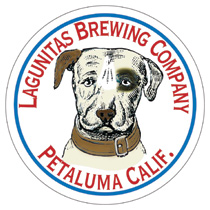Recession Timing
For a long time, the craft breweries were able to ignore the competition paradigm because of a lucky kind of timing. According to Gatza, the slow growth period that followed the first bust of craft brewing in the 1990s meant that brewers were more careful with the way they grew their brands this time around.
“A lot of craft brewers happened to be fortunate that in the mid-2000s, they had invested in capacity, and they had it online,” he says. When the recession hit, “craft was continuing to grow, and they weren’t crunched for capacity when lending dried up.”
Now, with the money loosening up, expansion is the word. But how well prepared are these companies to change their local-is-best model to start moving into new territories? With so many new breweries growing in those same local markets, increasing competition locally, isn’t there pressure to start to penetrate new areas?

Getting smaller isn’t an option, according to Owsley. “Now we’ve got guys in their garages, Gypsy brewers, they just keep re-manifesting. At some point, you’re going to go down the rabbit hole with that. The exoticism of the recipes, the next one has to go further and further. Having every beer sound like it’s an appetizer at a tony restaurant, eventually, is going to go back on them.”
Ricci points out that the local strength of so many craft breweries has led to a broad fear that “the craft beer industry is going to become the wine industry,” with too much diversity of style to create any kind of mass impact.
That’s not to say that the business is hurting now — in fact, look beyond the lack of national brands, Ricci says, and you can actually see brands developing beginning to innovate inside their own locales — much like wine regions become known for a particular varietal and innovate from there.
“A lot of the problem that I have with the way people look at the category is that they only view it traditionally: where are these brands going to develop,” he says. “But in developed marketplaces, you’re seeing entirely new channels for them to do so. What happens is thatÔǪ you see spinouts of that business, like smaller, independent retailers, beer-centric markets, where they’re showcasing different parts of the category.”
One perfect example? A craft beer growler program in upstate New York based in convenience stores.
“When businesses are strong enough,” Ricci says, “You see people coming in to take advantage.”
But developing new markets is a harder bit of branding — which takes us back to the Men’s Room, and Elysian itself.
See, Elysian isn’t planning on staying a 19,000 barrel per year Northwest regional brewery forever. The company has built capacity for another 46,000 barrels, and, Thompson says, the brand doesn’t have plans to contract out that capacity for anybody. The beer, eventually, is intended to travel.
To do that, though, the company has to help develop markets in new areas, much as it has locally.
Elysian has what Thompson calls a “multi-tiered” branding strategy to get this done, and it relies on extreme beers brewed to celebrate the potential that the year 2012 may signal the Apocalypse, as some believe was dictated by the Mayan calendar. As such, Elysian has had monthly “12 Beers of the Apocalypse” releases in cities it is attempting to penetrate, like Pittsburgh. The company works hard with distributors in new areas to identify the perfect location to release these high-quality apocalyptic beers, and then builds outward in those areas, introducing them to products like Men’s Room or Dragon’s Tooth Stout after an Apocalypse party.
He concedes that there are a lot of breweries aiming for those trendsetting bars — often the hip beer bar of the moment — but shows that he understands brands aren’t built in just one account. “There’s plenty of taps for everyone at the moment,” he says, “But you have to focus on that next tier of accounts with the distributor. “
“When we go in, we try to recognize bars as trendsetters, and count on the halo effect,” Thompson says. “For us, it’s a slow build, not a sprint.”
